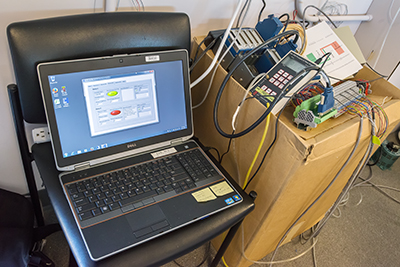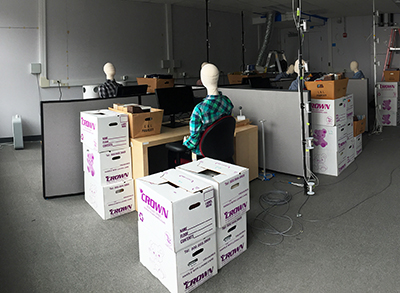Hybrid Modeling

The Challenge: Modeling Energy Performance
Most U.S. building stock consists of existing buildings. How can we improve their operation or retrofit with new energy-efficient technologies? The answer to that question is critical to reduce energy use in the building sector. Although building simulation has been widely used to support the design of new buildings, modeling the energy performance of existing buildings is challenging because model inputs that have significant impacts on simulation results, such as internal thermal mass and infiltration, are difficult to obtain. This leads to discrepancies between simulated and measured energy uses. A hybrid modeling approach for existing buildings is needed that uses measured data to reduce these uncertainties, and the U.S. Department of Energy's FLEXLAB® facility at Lawrence Berkeley National Laboratory (Berkeley Lab) provides the perfect environment for testing.
The Solution: FLEXLAB®
In Department of Energy-funded research, scientists Tianzhen Hong and Sang Hoon Lee developed a new hybrid modeling approach to use zone air temperature to derive zone internal thermal mass and infiltration. Thermal mass—books, furniture, etc.—is an important component for stabilizing internal temperatures. Infiltration—uncontrolled outdoor air into a space—is another highly unknown parameter leading to uncertainties in heating or cooling load in buildings.
The researchers came up with a hybrid approach that is built upon the inverse model of the zone heat balance that keeps the virtues of physics-based modeling and also takes advantage of easily attainable measured data from low-cost sensors installed in buildings. Hybrid modeling enhances the accuracy of the building energy simulation for existing buildings by providing highly unknown parameters of the zone interior.


The Bottom Line: Improved Simulation Usability and Accuracy for Existing Buildings
The U.S. Department of Energy's FLEXLAB® facility at Lawrence Berkeley National Laboratory (Berkeley Lab) experiment verified the hybrid models in EnergyPlus, which improves simulation usability and accuracy for existing buildings, providing more reliable performance assessment to support building retrofit decision-making. The hybrid model could improve the accuracy of simulated HVAC energy use by 10-30%. Assuming 16.5 Quad of the current existing building market size, and an estimate of 20% increase of the potential 30% retrofit savings, this leads to an incremental 1.0 Quad of energy savings annually.
Download the full case study here: Hybrid Modeling
“The hybrid modeling approach reformulates the space heat balance equations, based on the new set of inputs, to derive a more accurate estimate of the building energy performance by solving the partially inverse problem”
Tianzhen Hong, Construction Pro NETWORK Magazine, 08/08/2014
